Very clever indeed.
A friend wrote recently how much he was enjoying using the newly added built-in lens corrections in Lightroom 3 with his ultra-wide Nikon zoom on a pair of Nikon pro bodies, a lens whose profile is included with Lightroom 3.
This got me thinking. How can one-click corrections work when distortion varies so widely over the focal length range of many wide zooms? If the lens is pre-programmed into Lightroom’s database by Adobe you do not get a choice of focal length when applying the profile. It’s strictly a one choice affair, which contrasts with my approach when crafting profiles for the 9-18mm MFT Olympus zoom for my Panasonic G1, where I had to create disparate profiles for each of the four marked focal lengths. The barrel distortion of that lens decreases with increasing focal length, so it’s not possible to make one profile to fit all focal lengths.
Now one of the finer lenses for my full frame Canon 5D is the 24-105mm L zoom. Lightroom 3 includes a built-in profile for this lens unlike with the Olympus 9-18mm where I had to make my own. The Canon has fine resolving power and micro contrast at all focal lengths of its useful zoom range but suffers from the most atrocious barrel distortion at the wide end (the center of peripheral straight lines bows out), changing to mild pincushion distortion (the center bows in) at the long end. How could Adobe’s ‘one click’ approach possibly work with this lens whose distortion characteristics vary widely with focal length?
Note that if you use Canon’s DPP software (I do not) to process your pictures I’m fairly certain that it corrects distortion at all focal lengths. However, the 5D, unlike the G1, has no in-body distortion correction for the manufacturer’s lenses, so processing in LR3 brings in the images in their fully distorted glory just as with the G1/Olympus lens combination. And distortion correction is important to me as I frequently take architectural pictures where I want my straight lines straight.
Well, it was but a few moments work to take five snaps, one at each of the marked focal lengths, with a straight edge close to the top of the frame in each. I processed these through Lightroom 3 and, after making virtual copies of each, applied the one-click lens distortion correction to each of the virtual copies, selecting the single profile for Canon’s 24-105mm L lens in each case. The pictures were snapped at 24, 28, 50, 67 and 105mm.
Here are the results – in each case the corrected version is shown first:
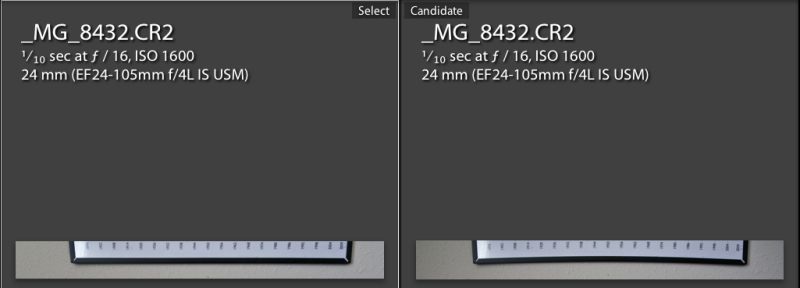
At 24mm. Noticeable barrel distortion in the uncorrected image at right.
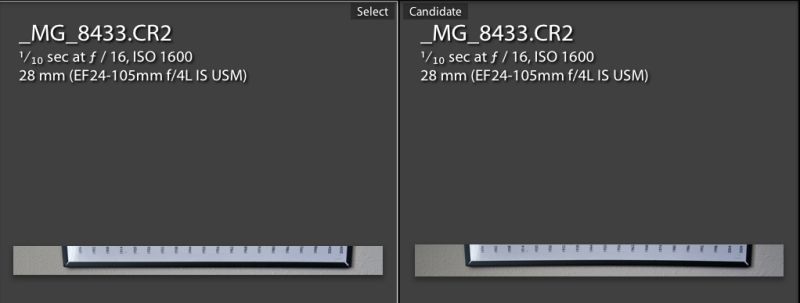
At 28mm. Mild barrel distortion in the uncorrected image.
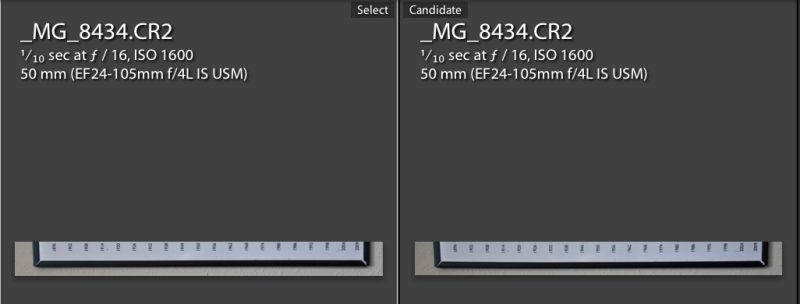
At 50mm. Very minor barrel distortion in the uncorrected image.
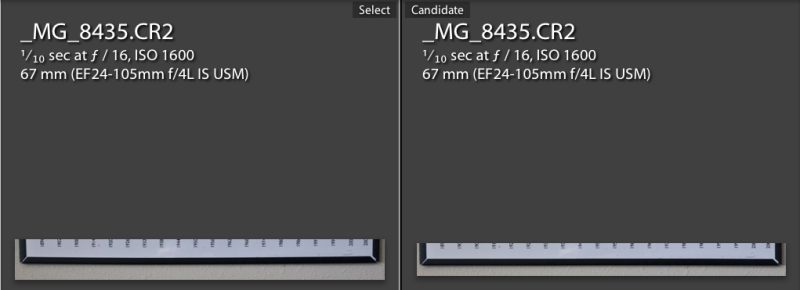
67mm. Very mild pincushion distortion in the uncorrected image.
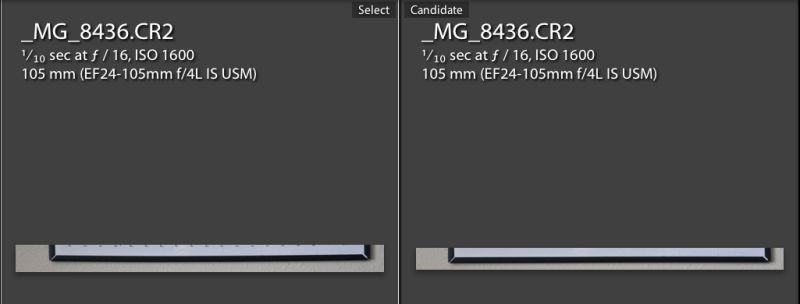
105mm. Very mild pincushion distortion in the uncorrected image.
So as the above pictures suggest, the Adobe built-in profile for the Canon 24-105mm lens takes into account the focal length at which the image was made and applies distortion correction appropriately. It may be ‘one-click’ for the user, but it seems there’s much more going on below the surface. In all cases the correction is almost perfect, with only the 67mm and 105mm images slightly overcorrected and showing mild barrel distortion. The correction at the wider focal lengths is especially praiseworthy, as the above pictures show. Very clever and much more sophisticated than the case where you have to make your own lens profiles in those instances where Lightroom 3 does not include these.